The Covid Diaries 52: IWM incl. Refugees & Ai Weiwei
A visit to the Imperial War Museum/IWM between lockdowns, including a work by Ai Weiwei and exhibitions on refugees. In which the temporary exhibitions really made me think but the Ai Weiwei was a tad over-hyped
What Can You See at the IWM, Aside From Ai Weiwei?
I’m pretty sure the last time I was in the Imperial War Museum (IWM) was about ten years ago. It has certainly had a bit of a spruce-up since then. Some of the features are the same like the WWI trench experience which is a perennial visitor favourite. But what I remember from my earlier visit was that it was organised a bit more by category back then. Or at least what I am thinking of is that at the time there was a War Artist display which I found quite interesting.
Today the museum is arranged very much on historic lines. There are permanent displays on WWI; WWII; the Holocaust; Peace and Security 1945-2014; and only the top floor dedicated to heroic acts spanning all time periods. The current displays also (for the most part) adhere to the decentralised, object-led, multiple narrative school of thought I have spoken about previously. I believe this absolutely helps to democratise the museum space and allow room for thought, discussion and inclusion. But I still find it a little difficult to navigate when I’m in a low concentration mood. I was in quite a high concentration mood when I arrived at the IWM. But given that it was half term and there were a lot of people to navigate, my capacity definitely dwindled. Full disclaimer: I was just doing cursory walkthroughs by the end and didn’t quite see everything…
Extraordinary Heroes: Humanising Exceptional Events
My museum-going partner and I started at the top and worked our way down. This means beginning in the Lord Ashcroft Gallery with a display on Extraordinary Heroes; ie. winners of the Victoria Cross (the highest military honour for bravery in the field) and the George Cross (for military or civilian acts of bravery away from the front lines of battle). Lord Ashcroft, by the way, is a businessman who happens to have a very large collection of Victoria crosses. He entered discussions with the IWM some time ago before their refurbishment to see if they could be displayed at the museum.
The result is a very comprehensive display. Medals from different eras, situations, conflicts etc. are displayed alongside the story of the person who received it/them and why. There are a lot of personal objects as well which help to tell the story more fully. There is also a children’s stamp trail to help them to connect to qualities shown by many of the recipients. (I of course did the stamp trail too). I think the inclusion of so many personal objects and stories helps to steer it away from the glorification of war and towards the recognition of individual reactions to incredibly difficult circumstances. Overall I found it very interesting.
Holocaust Galleries: Difficult Content Sensitively Told
The next galleries in order of descent were those related to the Holocaust. Visitors are asked not to take pictures so there are none above, but the exhibition is as harrowing as you would expect. This part of the museum stands out for being organised in a more or less linear fashion vs. decentralised/object-led. I’m not sure if this is because of the importance of continuing to teach new generations how a situation like this happens, or because it’s a slightly older display than some of the others. But nonetheless the creeping sense of dismay as the situation worsens month by month/year by year is very powerful.
There are plenty of personal stories for visitors to connect with. The museum is also careful to tell the stories of all the persecuted: Jewish people; Romany and other Traveller communities; gay people; communists; and so on. It’s an important story to tell, but its importance within the galleries of the IWM is almost a little jarring. It’s difficult to exit the Holocaust section and then continue on for another couple of hours of museum viewing. I don’t have an answer on whether I think a dedicated Holocaust memorial museum is a better place to remember this time in history, but whether or not you choose to visit these galleries certainly shapes your experience of going to the IWM.
…And The Rest of the IWM
After the Holocaust section I emerged into the temporary exhibition space. Not the Ai Weiwei display installed in the main hall of the IWM, on which I will write more below. By the time I finished in there I was feeling somewhat fatigued, so I skipped entirely the floors on World War II and Peace and Security 1934-1945. Instead I did a quick walk through of the World War I galleries. With their object-led fragmentation of the narrative this space is a little overwhelming on the senses. At the same time, though, it allows visitors to delve in and out of stories that catch their eye.
There is definitely a good use of multi-media sources, information pitched at different levels, and so on. So there’s something for everyone and it’s especially good for families. In fact, on a Sunday during half term it was a little overrun with families… The permanent galleries do not all lend themselves to social distancing, so make sure you’re either comfortable with this or adept at ducking and weaving before you decide to go to the IWM.
A Difficult Story To Position?
So in terms of the permanent galleries of the IWM, I think they tell important stories, I think they do it well (if sometimes fatiguingly), but I somehow wanted more. Obviously with most of the museum space given over to the two World Wars there are topics that aren’t covered. I think it would have been nice to see the museum reflecting on what it means to be an Imperial war museum when there is no longer an Empire.
For example, with the decisions on what to give space to, what other conflicts or viewpoints are left out? What did it mean to be a soldier of the Empire, and what does that mean today? These stories are difficult to tell, particular when the history is recent and the painful aspects are still fresh. But I think it’s important, and is perhaps what can be taken into account whenever there is another refurbishment. What disappoints me just a little is that the last one was in 2014 and none of that is visible.
Ai Weiwei at the IWM: History of Bombs
Loosely tied to the Refugees exhibition season at the IWM, History of Bombs is an artwork by Ai Weiwei. It covers the floor and staircases of the museum’s atrium, with a repeating pattern of 50 life-sized bombs of the last 100 years. The bombs are arranged in order of how destructive they are. It’s interesting, but honestly don’t go out of your way to see it. If you hadn’t been told that it was an artwork by Ai Weiwei it just looks like a floor pattern that the IWM might have come up with themselves.
Refugees at the IWM
Lastly I want to cover the exhibitions which make up the IWM’s Refugees season. There are three, covering one floor of the gallery space. The exhibitions take different approaches: one is a classic object-centred exhibition; one a film installation; and one an interactive experience. All have a shared aim of encouraging visitors to put themselves in the position of a refugee, whether past, present or future.
Forced to Flee
Refugees: Forced to Flee is the largest of the three exhibitions and the most traditional. It explores ‘stories of displacement’ over the last 100 years or so, with a focus on human connection. The first room you step into recreates elements of the homes which displaced people had to leave, alongside their stories. Throughout the exhibition questions are posed to make you consider what you would do in their situation. Could you leave everything behind? Would you risk crossing the Mediterranean if it was safer than what you were leaving behind?
Interspersed with these big questions are both contemporary artworks which respond to the refugee experience of migration or of the idea of home, and also objects from refugees and from host communities. By the time you reach the end of the exhibition the bond of empathy with refugees is so strong that the windows which display positive and negative responses to refugees are shocking, as well they should be. I hope that the exhibition changes at least some attitudes.
Life in a Camp
Alongside this fairly comprehensive look at displacement over the last century are two smaller exhibitions which put you directly into a refugee’s shoes. Firstly Life in a Camp, using footage shot by CNN in a Greek camp in early 2020. The installation shows the experience of daily life, projected on three sides of smallish room. The viewer sees ‘first hand’ the extent to which these camps are peopled with families, often with young children, eking out an often unsafe or unsanitary existence in very harsh conditions. To spend weeks or months of one’s childhood in such a place is a truly sobering idea. I hate to think what the experience has been in the last year.
A Face to Open Doors
And lastly there is A Face to Open Doors. The work of creative studio Anagram, A Face to Open Doors is described by them as an ‘artefact from a future society’, in which the facilitation of asylum claims has been commercialised. The visitor sits in a booth as an AI programme determines the best fit in terms of future job and country. I got factory work in Khartoum. Visitors are then tested on how well they display emotions in order to see whether they are trustworthy. I was rejected, as was the person in the booth next to me – not sure if everyone is.
It is fascinating and the interactivity makes it quite fun. At the same time it’s very disturbing because, like a good old episode of Black Mirror, it’s not that far from the truth. A Face to Open Doors is research-based at its heart. The walls around the AI booth display quotes from experts in their fields explaining how a lot of asylum decisions are based on non-scientific attempts to weed out inauthentic claimants based on their reactions. These technological ‘fixes’ generally don’t take into account the effects that trauma can have on emotion and memory, but nonetheless AI is already being explored as a solution to verifying ‘truthfulness’.
It’s a little terrifying and again designed to make you empathise. If you were in this position, how would you convince the powers that be of the truth of your story? It’s the lived experience of people around the world every day, after all.
Final Thoughts
The Refugees series is very modern and thought-provoking and important. I like its inclusion in the IWM to tell the other side of every conflict; the displacement of people who had no involvement in the events leading to them being forced to leave their homes. It’s perhaps not as family-friendly as other parts of the museum, but then again a thoughtful family visit to the IWM probably always involves an element of careful discussion of the themes and topics a child will see. I would certainly recommend seeing it, with A Face to Open Doors a particular highlight for me. I will keep an eye on any other works by Anagram in future.
On its own merits: 3/5
Ai Weiwei: History of Bombs: 2.5/5
Refugees: 4/5
Implementing Covid measures: 2.5/5
Refugees and History of Bombs by Ai Weiwei on at the IWM until 24 May 2021 (subject to change, check museum website for details)
Looking for more London museum and exhibition reviews? Sign up below for the Salterton Arts Review newsletter, delivered weekly.
If you see this after your page is loaded completely, leafletJS files are missing.

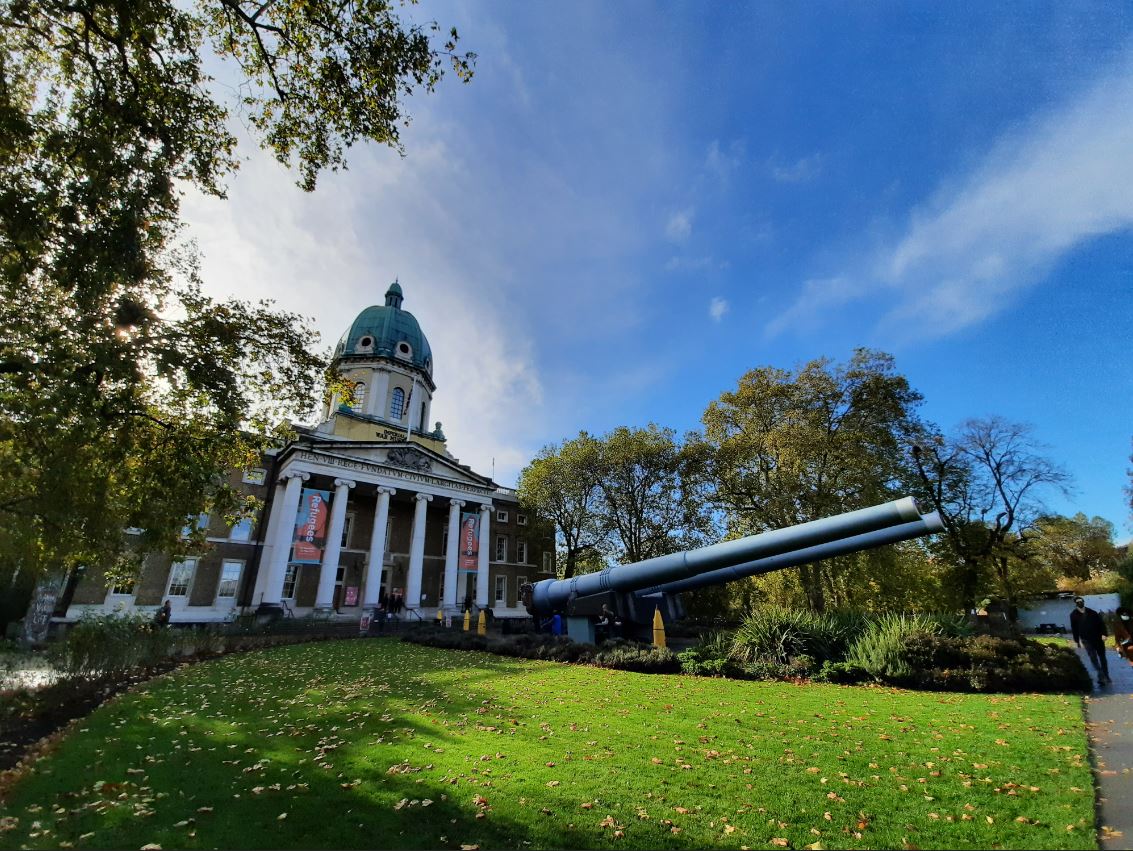

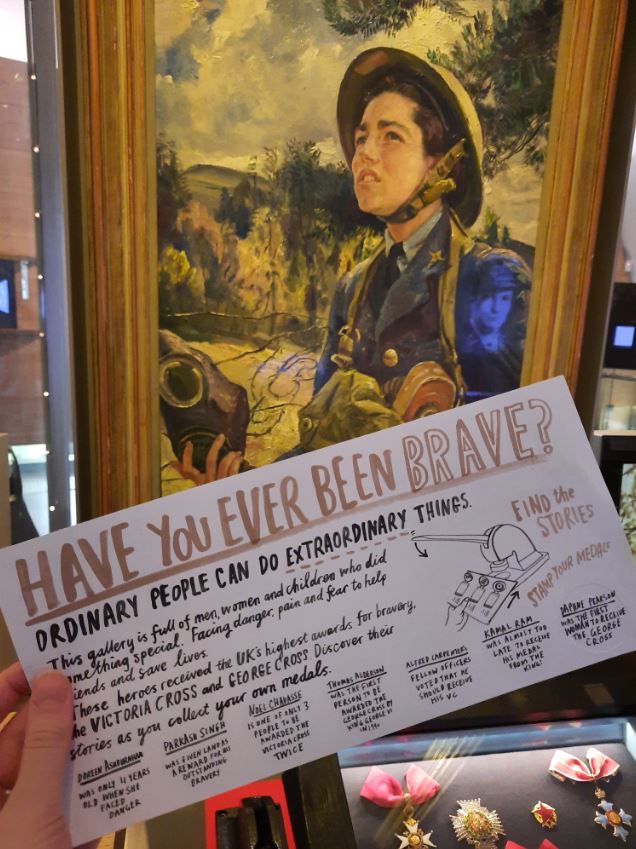


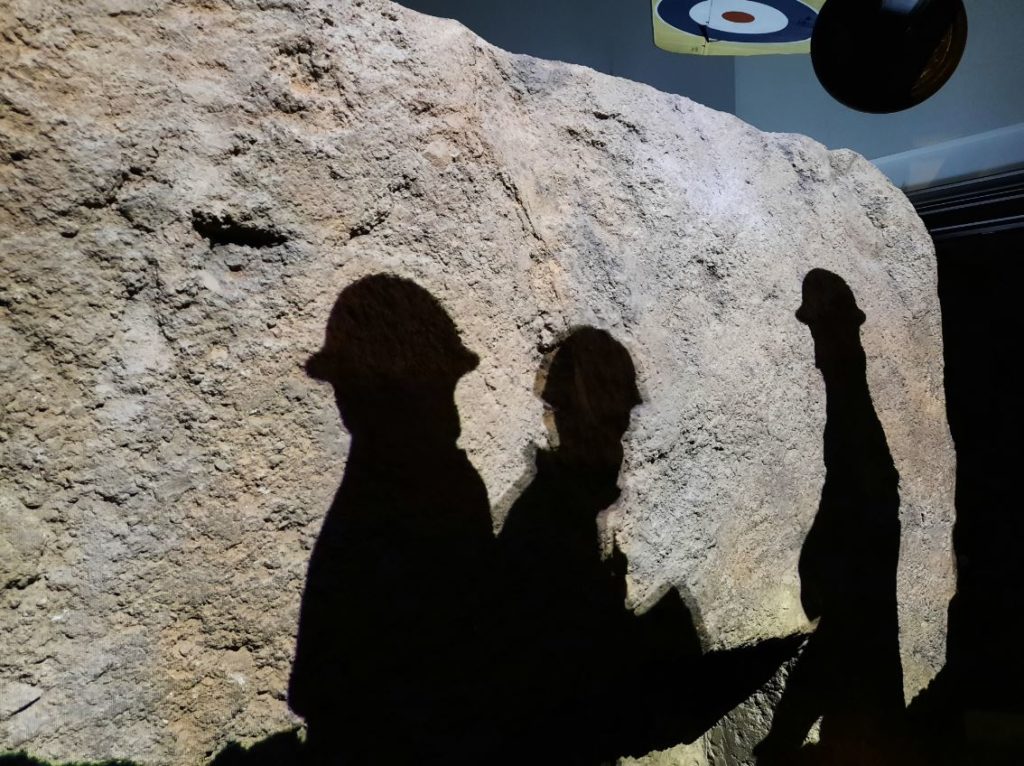
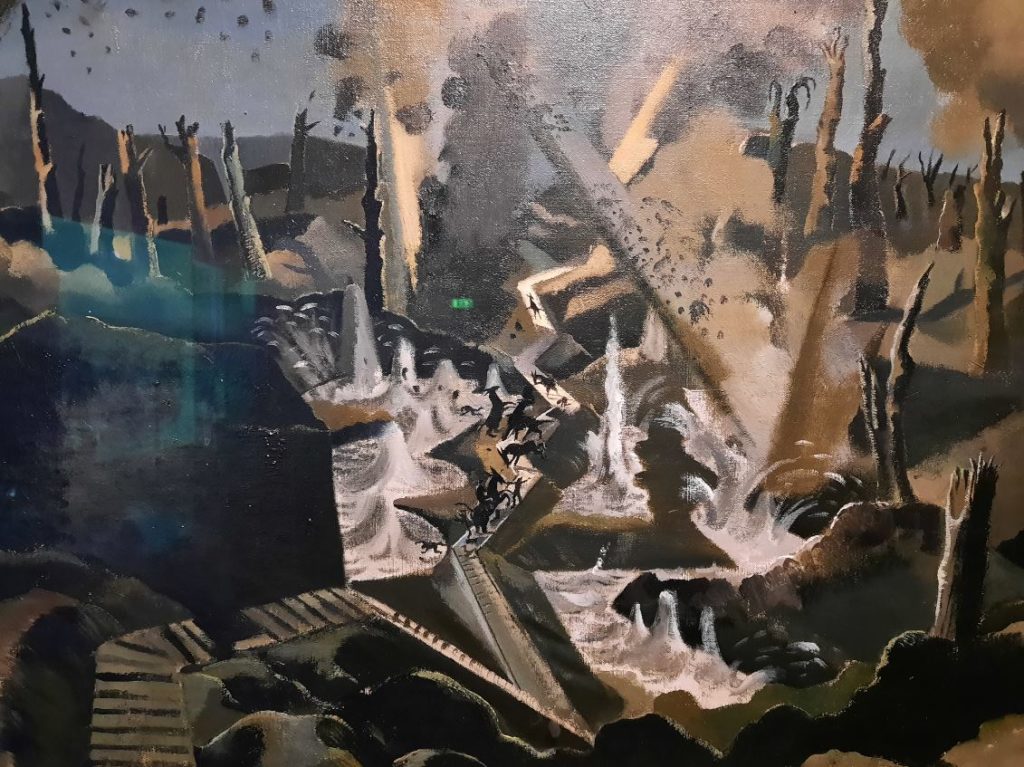

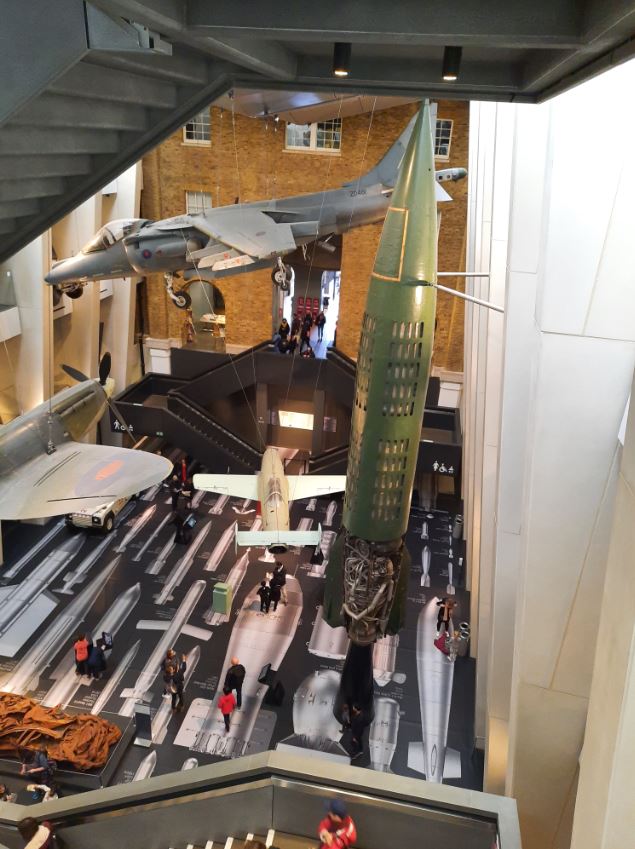


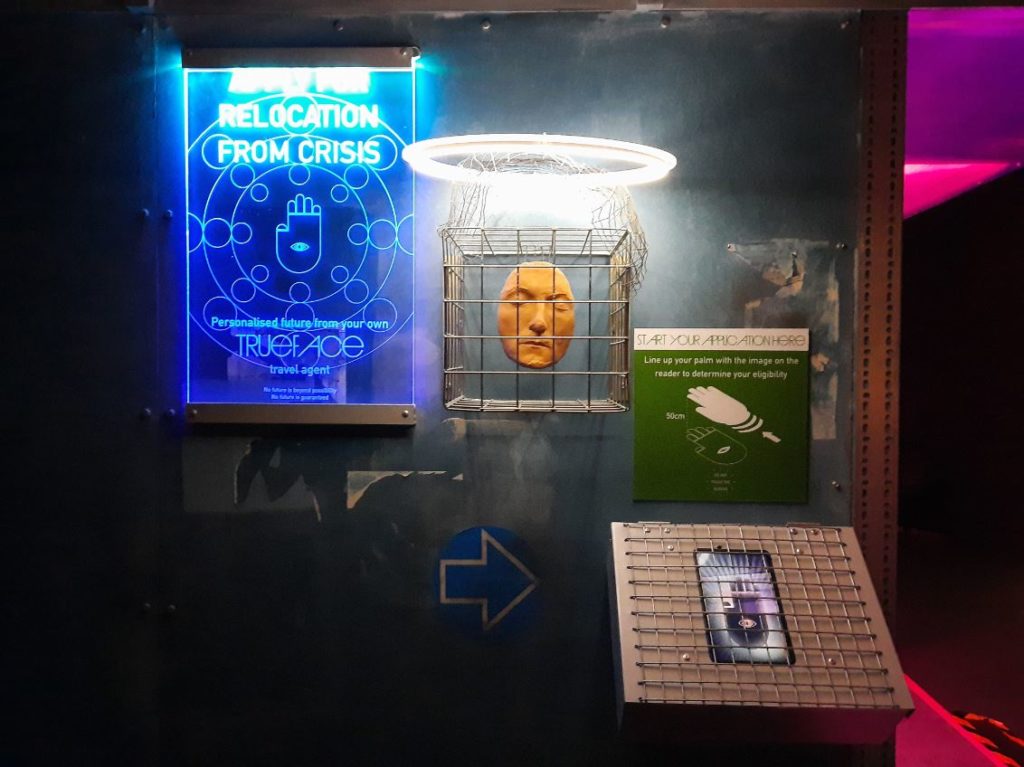


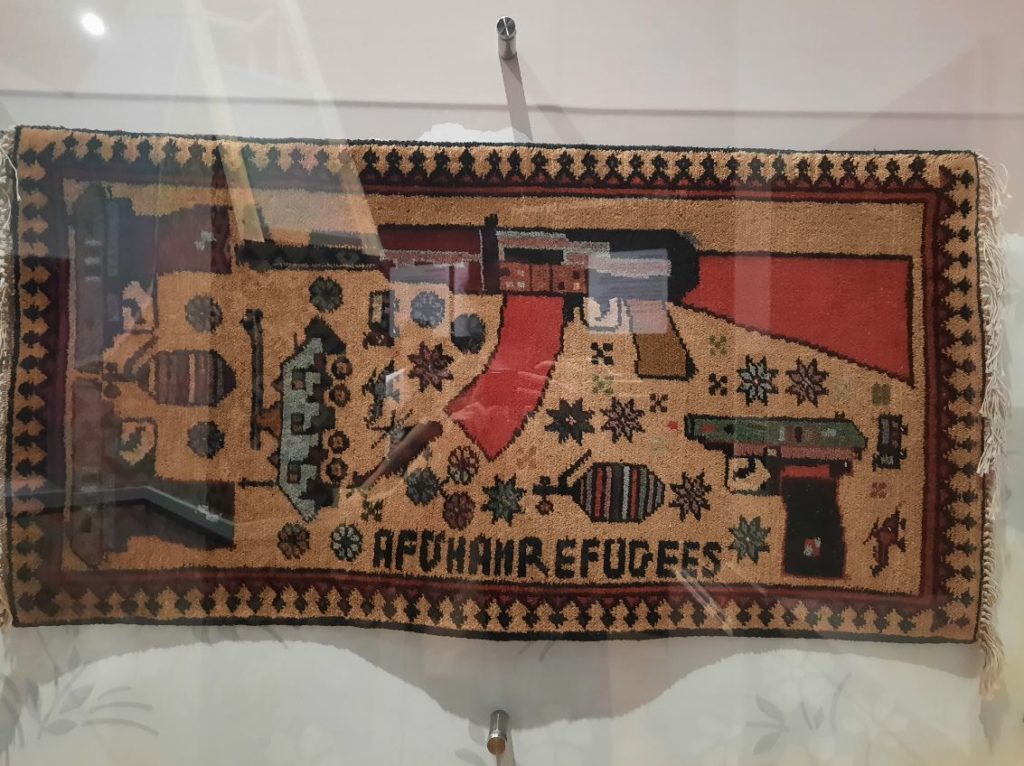

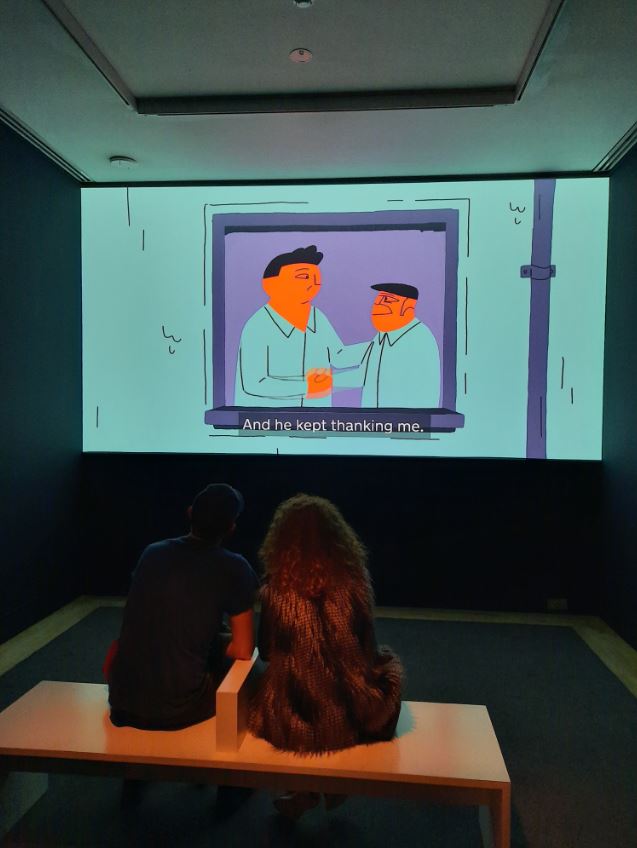
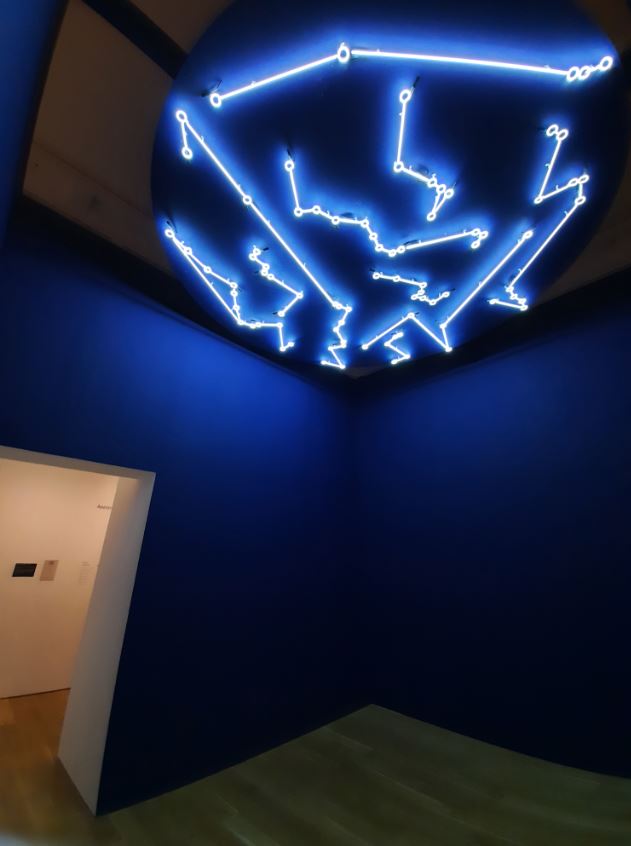

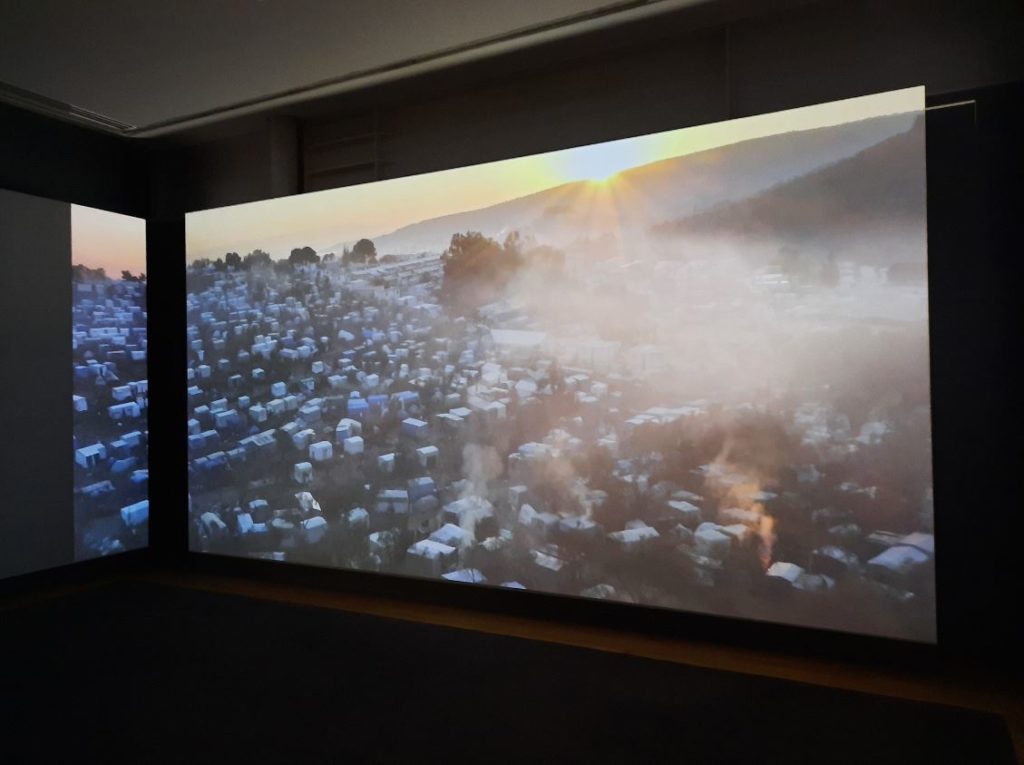
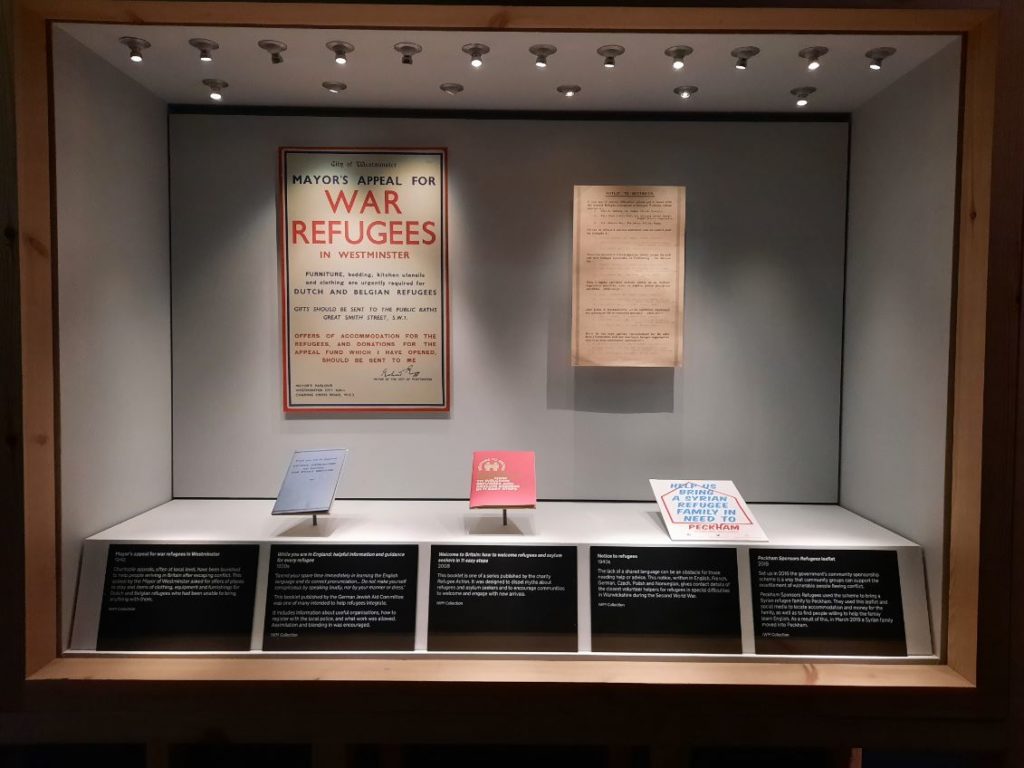
6 thoughts on “The Covid Diaries 52: IWM incl. Refugees & Ai Weiwei”